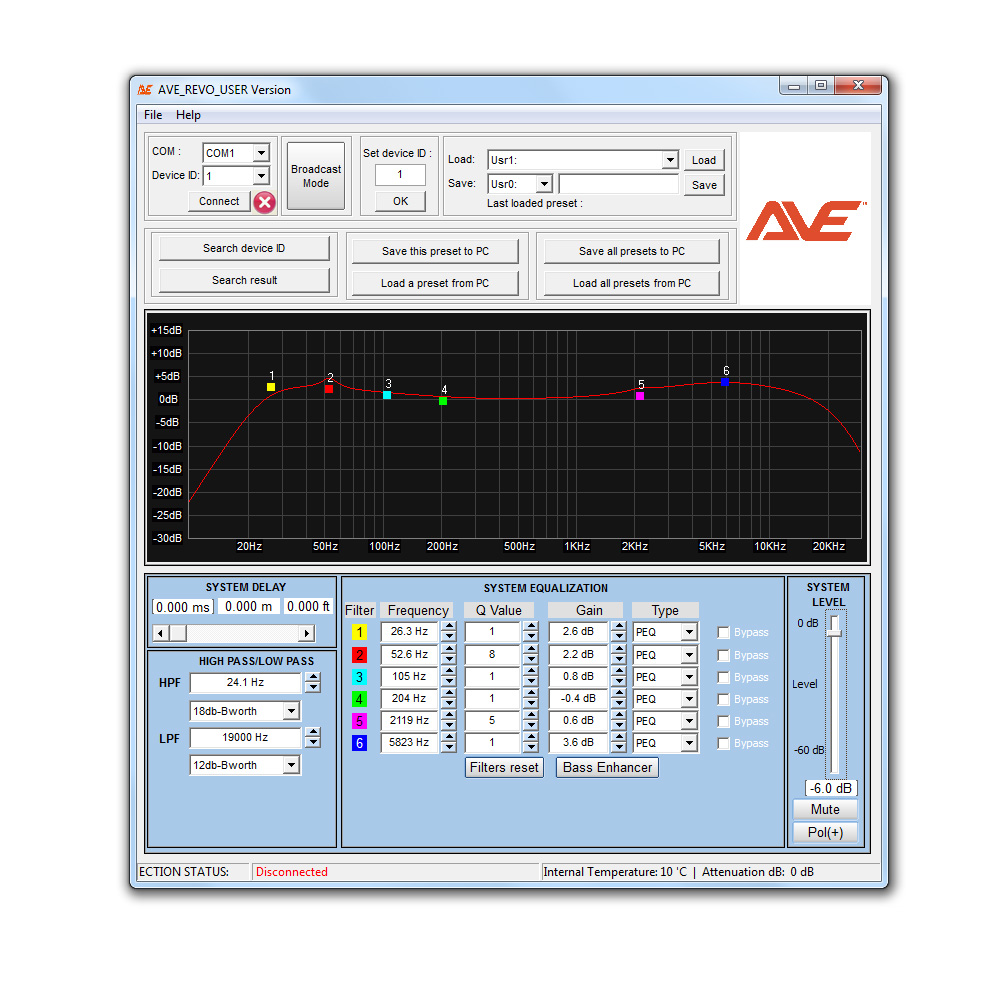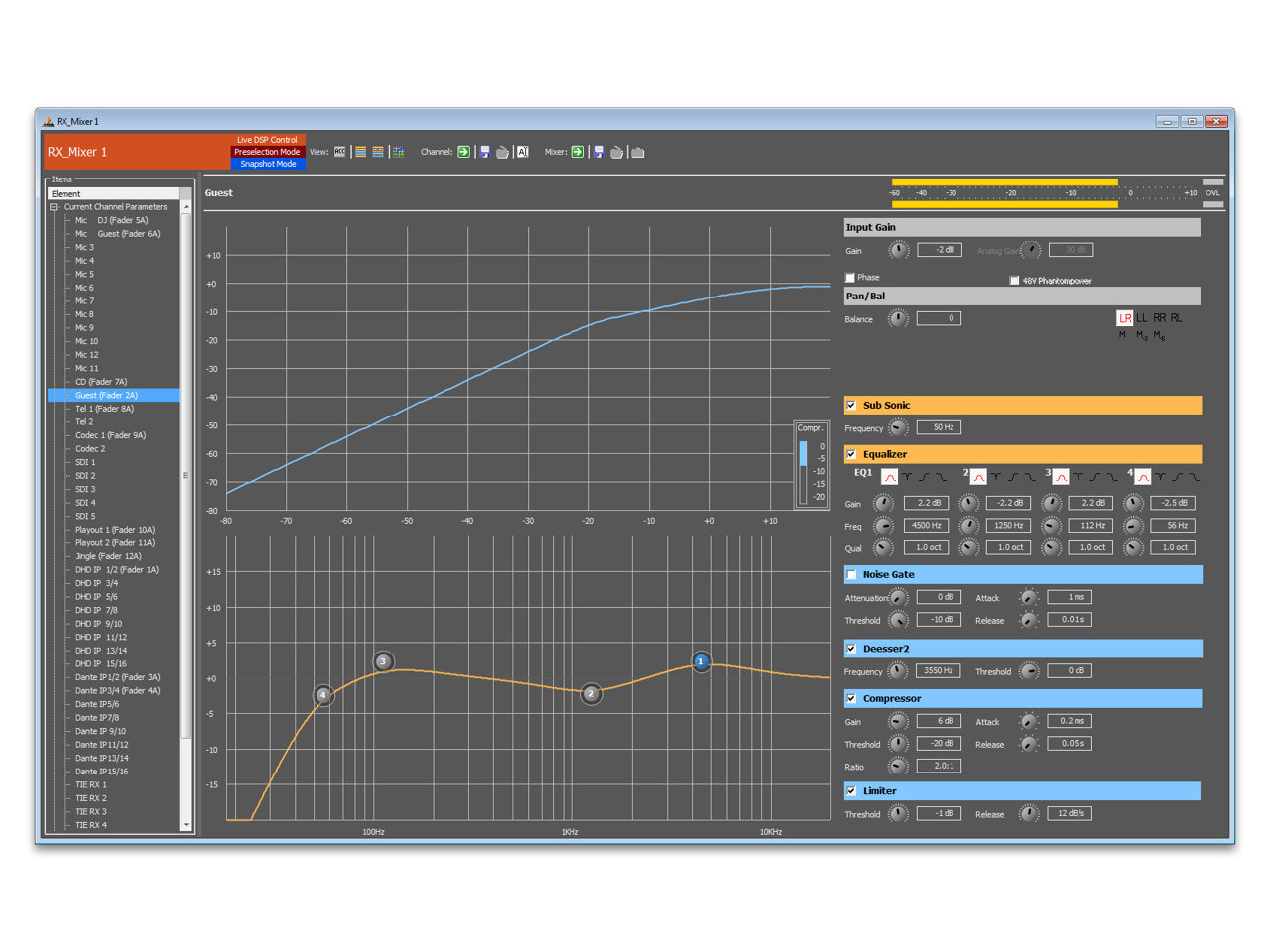Analog Devices has a broad selection of processors for a wide variety of applications. For more specific information about ADI Processors and Precision Analog Microcontrollers we invite you to explore the following:
- The Demand Side Platform (DSP) Software market research report completely covers the vital statistics of the capacity, production, value, cost/profit, supply/demand import/export, further divided.
- PC Software Design Many of the products developed by Indesign, LLC include a Digital Signal Processor (DSP). For fast and efficient processing of audio, video and other math intensive signal processing a DSP is the best device for the application.
- Before downloading and installing the DM Smart DSP software you need to power up your DM processor or Matrix DSP amplifier and connect it to your computer via the included USB cable. Then you will need to download the software from the bottom of the DM-810 product page here, or from the DM-608 page here, or from the D 6.1200 page here,.
The following document describes the basic concepts of Digital Signal Processing (DSP) and also contains a variety of Recommended Reading links for more in-depth information.
What is a DSP?

Digital Signal Processors (DSP) take real-world signals like voice, audio, video, temperature, pressure, or position that have been digitized and then mathematically manipulate them. A DSP is designed for performing mathematical functions like 'add', 'subtract', 'multiply' and 'divide' very quickly.
The architecture of a DSP is optimized specifically for digital signal processing. Most also support some of the features as an applications processor or microcontroller, since signal processing is rarely the only task of a system. Some useful features for optimizing DSP algorithms are outlined below. Architecture Software architecture.
Signals need to be processed so that the information that they contain can be displayed, analyzed, or converted to another type of signal that may be of use. In the real-world, analog products detect signals such as sound, light, temperature or pressure and manipulate them. Converters such as an Analog-to-Digital converter then take the real-world signal and turn it into the digital format of 1's and 0's. From here, the DSP takes over by capturing the digitized information and processing it. It then feeds the digitized information back for use in the real world. It does this in one of two ways, either digitally or in an analog format by going through a Digital-to-Analog converter. All of this occurs at very high speeds.
To illustrate this concept, the diagram below shows how a DSP is used in an MP3 audio player. During the recording phase, analog audio is input through a receiver or other source. This analog signal is then converted to a digital signal by an analog-to-digital converter and passed to the DSP. The DSP performs the MP3 encoding and saves the file to memory. During the playback phase, the file is taken from memory, decoded by the DSP and then converted back to an analog signal through the digital-to-analog converter so it can be output through the speaker system. In a more complex example, the DSP would perform other functions such as volume control, equalization and user interface.
A DSP's information can be used by a computer to control such things as security, telephone, home theater systems, and video compression. Signals may be compressed so that they can be transmitted quickly and more efficiently from one place to another (e.g. teleconferencing can transmit speech and video via telephone lines). Signals may also be enhanced or manipulated to improve their quality or provide information that is not sensed by humans (e.g. echo cancellation for cell phones or computer-enhanced medical images). Although real-world signals can be processed in their analog form, processing signals digitally provides the advantages of high speed and accuracy.
Because it's programmable, a DSP can be used in a wide variety of applications. You can create your own software or use software provided by ADI and its third parties to design a DSP solution for an application. For more detailed information about the advantages of using DSP to process real-world signals, please read Part 1 of the article from Analog Dialogue titled: Why Use DSP? Digital Signal Processing 101- An Introductory Course in DSP System Design.
What's Inside a DSP?
A DSP contains these key components:

Dsp Software For Mac
- Program Memory: Stores the programs the DSP will use to process data
- Data Memory: Stores the information to be processed
- Compute Engine: Performs the math processing, accessing the program from the Program Memory and the data from the Data Memory
- Input/Output: Serves a range of functions to connect to the outside world
Recommended Reading
Digital Signal Processing is a complex subject that can overwhelm even the most experienced DSP professionals. Although we have provided a general overview, Analog Devices offers the following resources that contain more extensive information about Digital Signal Processing:

- Fixed-Point vs Floating-Point Digital Signal Processing – Technology Overview and Application Considerations
- Analog Dialogue Series: Digital Signal Processing 101- An Introductory Course in DSP System Design
- Part 1: Why use DSP? DSP Architecture and DSP Advantages Over Traditional Analog Circuitry
- Part 2: Learn More About Digital Filters
- Part 3: Implement Algorithms on a Hardware Platform
- Part 4: Programming Considerations for Real-Time I/O
- Let's Talk DSP: Commonly Used Words and What They Mean

Digital Signal Processors (DSP) take real-world signals like voice, audio, video, temperature, pressure, or position that have been digitized and then mathematically manipulate them. A DSP is designed for performing mathematical functions like 'add', 'subtract', 'multiply' and 'divide' very quickly.
The architecture of a DSP is optimized specifically for digital signal processing. Most also support some of the features as an applications processor or microcontroller, since signal processing is rarely the only task of a system. Some useful features for optimizing DSP algorithms are outlined below. Architecture Software architecture.
Signals need to be processed so that the information that they contain can be displayed, analyzed, or converted to another type of signal that may be of use. In the real-world, analog products detect signals such as sound, light, temperature or pressure and manipulate them. Converters such as an Analog-to-Digital converter then take the real-world signal and turn it into the digital format of 1's and 0's. From here, the DSP takes over by capturing the digitized information and processing it. It then feeds the digitized information back for use in the real world. It does this in one of two ways, either digitally or in an analog format by going through a Digital-to-Analog converter. All of this occurs at very high speeds.
To illustrate this concept, the diagram below shows how a DSP is used in an MP3 audio player. During the recording phase, analog audio is input through a receiver or other source. This analog signal is then converted to a digital signal by an analog-to-digital converter and passed to the DSP. The DSP performs the MP3 encoding and saves the file to memory. During the playback phase, the file is taken from memory, decoded by the DSP and then converted back to an analog signal through the digital-to-analog converter so it can be output through the speaker system. In a more complex example, the DSP would perform other functions such as volume control, equalization and user interface.
A DSP's information can be used by a computer to control such things as security, telephone, home theater systems, and video compression. Signals may be compressed so that they can be transmitted quickly and more efficiently from one place to another (e.g. teleconferencing can transmit speech and video via telephone lines). Signals may also be enhanced or manipulated to improve their quality or provide information that is not sensed by humans (e.g. echo cancellation for cell phones or computer-enhanced medical images). Although real-world signals can be processed in their analog form, processing signals digitally provides the advantages of high speed and accuracy.
Because it's programmable, a DSP can be used in a wide variety of applications. You can create your own software or use software provided by ADI and its third parties to design a DSP solution for an application. For more detailed information about the advantages of using DSP to process real-world signals, please read Part 1 of the article from Analog Dialogue titled: Why Use DSP? Digital Signal Processing 101- An Introductory Course in DSP System Design.
What's Inside a DSP?
A DSP contains these key components:
Dsp Software For Mac
- Program Memory: Stores the programs the DSP will use to process data
- Data Memory: Stores the information to be processed
- Compute Engine: Performs the math processing, accessing the program from the Program Memory and the data from the Data Memory
- Input/Output: Serves a range of functions to connect to the outside world
Recommended Reading
Digital Signal Processing is a complex subject that can overwhelm even the most experienced DSP professionals. Although we have provided a general overview, Analog Devices offers the following resources that contain more extensive information about Digital Signal Processing:
- Fixed-Point vs Floating-Point Digital Signal Processing – Technology Overview and Application Considerations
- Analog Dialogue Series: Digital Signal Processing 101- An Introductory Course in DSP System Design
- Part 1: Why use DSP? DSP Architecture and DSP Advantages Over Traditional Analog Circuitry
- Part 2: Learn More About Digital Filters
- Part 3: Implement Algorithms on a Hardware Platform
- Part 4: Programming Considerations for Real-Time I/O
- Let's Talk DSP: Commonly Used Words and What They Mean
DSP workshops are a very fast and efficient way to learn how to use Analog Devices DSP chips. The workshops are designed to develop a strong working knowledge of Analog Devices' DSP through lecture and hands-on exercises.
- Region
- Languages
Dsp Software For Pc
Table of contents
Free Dsp Software Download
- 1: The Breadth and Depth of DSP
- 2: Statistics, Probability and Noise
- 3: ADC and DAC
- 4: DSP Software
- 5: Linear Systems
- 6: Convolution
- 7: Properties of Convolution
- 8: The Discrete Fourier Transform
- 9: Applications of the DFT
- 10: Fourier Transform Properties
- 11: Fourier Transform Pairs
- 12: The Fast Fourier Transform
- 13: Continuous Signal Processing
- 14: Introduction to Digital Filters
- 15: Moving Average Filters
- 16: Windowed-Sinc Filters
- 17: Custom Filters
- 18: FFT Convolution
- 19: Recursive Filters
- 20: Chebyshev Filters
- 21: Filter Comparison
- 22: Audio Processing
- 23: Image Formation & Display
- 24: Linear Image Processing
- 25: Special Imaging Techniques
- 26: Neural Networks (and more!)
- 27: Data Compression
- 28: Digital Signal Processors
- 29: Getting Started with DSPs
- 30: Complex Numbers
- 31: The Complex Fourier Transform
- 32: The Laplace Transform
- 33: The z-Transform
- 34: Explaining Benford's Law
